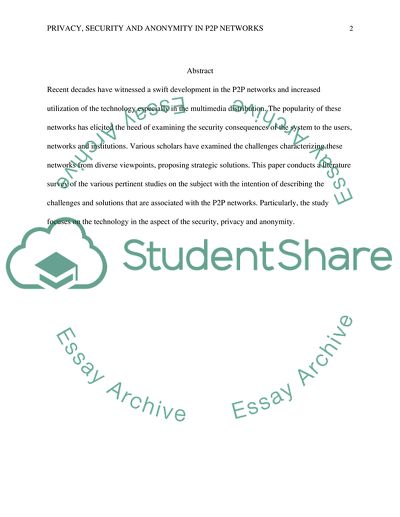Cite this document
(Privacy, Security and Anoymity in P2P networks for Multimedia Research Paper, n.d.)
Privacy, Security and Anoymity in P2P networks for Multimedia Research Paper. Retrieved from https://studentshare.org/information-technology/1797101-privacy-security-and-anoymity-in-p2p-networks-for-multimedia-distribution-challenges-and-solutions
Privacy, Security and Anoymity in P2P networks for Multimedia Research Paper. Retrieved from https://studentshare.org/information-technology/1797101-privacy-security-and-anoymity-in-p2p-networks-for-multimedia-distribution-challenges-and-solutions
(Privacy, Security and Anoymity in P2P Networks for Multimedia Research Paper)
Privacy, Security and Anoymity in P2P Networks for Multimedia Research Paper. https://studentshare.org/information-technology/1797101-privacy-security-and-anoymity-in-p2p-networks-for-multimedia-distribution-challenges-and-solutions.
Privacy, Security and Anoymity in P2P Networks for Multimedia Research Paper. https://studentshare.org/information-technology/1797101-privacy-security-and-anoymity-in-p2p-networks-for-multimedia-distribution-challenges-and-solutions.
“Privacy, Security and Anoymity in P2P Networks for Multimedia Research Paper”, n.d. https://studentshare.org/information-technology/1797101-privacy-security-and-anoymity-in-p2p-networks-for-multimedia-distribution-challenges-and-solutions.


